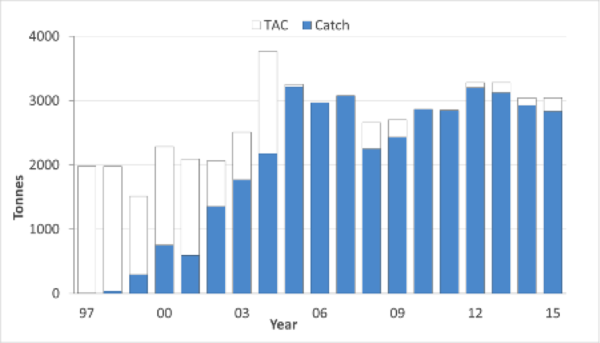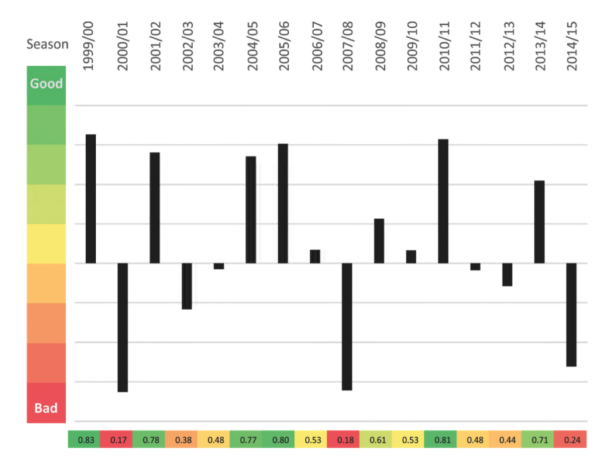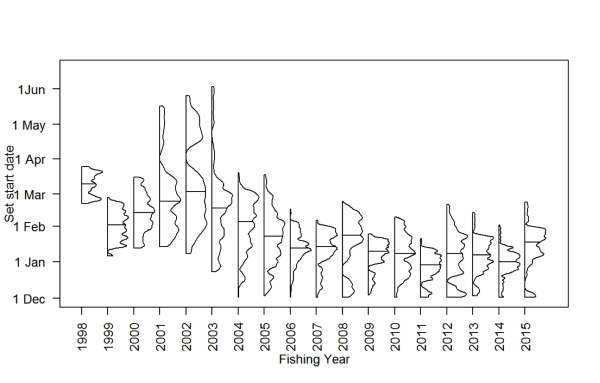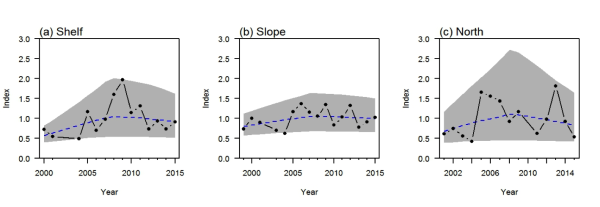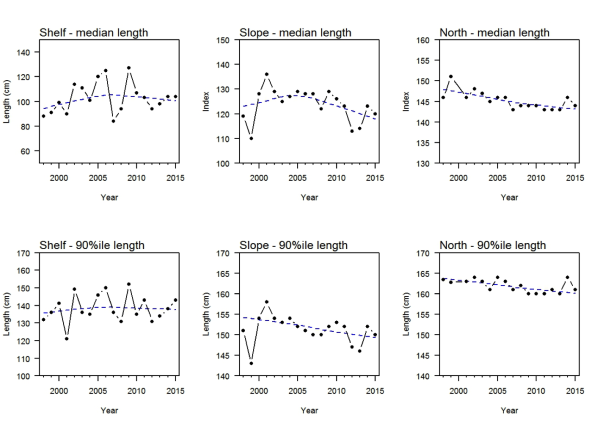Read the Subarea 88.1 fishery reports
Read more on the spatial management of the Ross Sea.
Catch
Sea ice influences on the fishery
Ross Sea mean sea ice concentration
This video shows mean sea ice concentration in Small Scale Research Units (SSRUs) 88.1H, 88.1I and 88.1K (red polygons) for the 2001-2002 fishing season. Sea ice concentrations are shown as open water (0, blue) to 1 (100% ice coverage, white). Each pixel shows the mean value for that cell for the period shown and the mean value for all pixels within each polygon is shown in the box at the bottom of the image. Sea ice concentration contours are shown as the proportion covered. SSRU boundaries and the 1,000 m depth contour are visible in the background of the image. [NIWA]
Fishery operational requirements
There are many regulatory requirements for fishing vessels operating under the auspices of CCAMLR in the region. Below, you can see a few of these, specifically related to the operations of vessels during the fishery. More information is available on the CCAMLR website.
Catch limits: Catch limits are set by CCAMLR, typically for two-year periods. The fishery currently opens on 1 December and typically closes by the end of January.
VMS: Vessels are required to be monitored with an electronic vessel monitoring system to track location.
Catch and effort reporting: Daily catch is reported to CCAMLR and CCAMLR issues a closure notice as the catch limit is approached.
Observer coverage: Each vessel is required to carry two scientific observers, one from the country authorizing the vessel, and one international observer.
Tagging: Vessels are required to tag fish at a rate of 1 fish per ton of toothfish catch. In addition, the size distribution of the tagged fish must match the size distribution of the catch.
Move-on rules: Vessels must stop fishing in an area and move to a new location if they catch above a threshold level of bycatch of macrourids (rattails) or habitat-forming invertebrates (corals and sponges characteristic of vulnerable marine ecosystems (termed VMEs).
Bycatch limits: Bycatch limits are in place for macrourids, skates, and the combined total of all other minor bycatch species.
Catch documentation scheme: Vessels taking fish from toothfish fisheries authorised by CCAMLR participate in a catch documentation scheme to track fish from the source fishery to the fish distributors.

